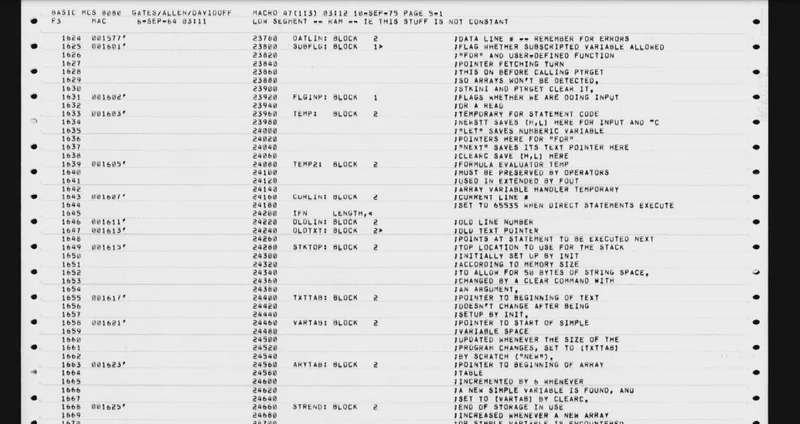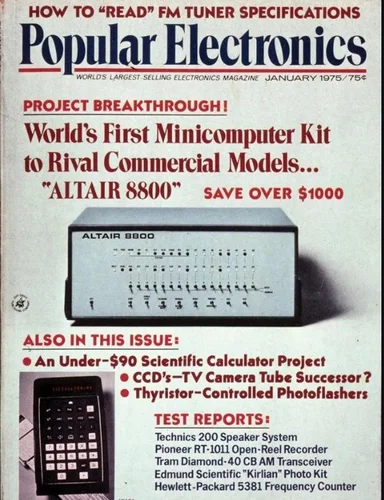
Tech Pioneer Shares Original Program That Launched a Computing Revolution
As Microsoft approaches its 50th anniversary this Friday, co-founder and former CEO Bill Gates has shared a remarkable piece of computing history. In a nostalgic tribute to the company’s beginnings, Gates has publicly released the complete source code of Microsoft’s very first program—a creation he still considers “the coolest” code he’s ever written despite decades of groundbreaking innovations that followed.
The Birth of a Tech Giant
The revelation came through a heartfelt post on Gates’ personal blog, where he not only shared the historic code but also recounted the company’s origin story and his memories of co-founder Paul Allen. The two met during their university years when Allen was already working as a programmer and Gates was considering dropping out of his studies. Allen, who passed away in 2018 at age 65 due to complications from illness, played an instrumental role in Microsoft’s foundation and early success.
“It’s incredible to think about how this small piece of code led to half a century of innovations at Microsoft. Before we had Office or Windows 95 or Xbox or AI, there was this original source code—and I still get emotional just looking at it, even after all these years,” Gates wrote in his post.
The complete source code, released as a 157-page PDF document, might appear cryptic to those outside the programming world or unfamiliar with early computing environments. However, for tech enthusiasts and computing historians, it represents a pivotal moment in technology history. The document is available for download through a link provided by Gates.
Altair BASIC: Microsoft’s First Creation
The groundbreaking program created by Gates and Allen was Altair BASIC—an interpreter that enabled software development in the BASIC programming language for the Altair 8800 computer. This interpreter essentially allowed other developers to create applications for this early personal computer, laying the groundwork for software development practices that would evolve over decades.

The duo faced significant challenges during the program’s creation. Computing equipment was prohibitively expensive at the time, especially for two young entrepreneurs with limited resources. Additionally, the Altair 8800’s minimal memory required innovative optimization techniques and programming “hacks” to fit the interpreter into the available space. Gates and Allen dedicated two full months to the project, working on a PDP-10 terminal at Harvard University until they completed the code.
From Magazine Cover to Company Launch
According to Gates, Microsoft’s story begins with the January 1975 issue of Popular Electronics, a magazine targeted at technology enthusiasts. The publication featured the Altair 8800 on its cover—a rudimentary personal computer sold in kit form that users would assemble themselves.

Gates and Allen were immediately captivated by the device and recognized that “the personal computer revolution was imminent.” Determined to participate from the beginning of this technological transformation, they decided to write the BASIC interpreter for the Altair 8800.
The pair proposed their idea to Micro Instrumentation and Telemetry Systems (MITS), the manufacturer of the Altair 8800. After MITS approved and began distributing the program, Gates and Allen effectively had a company. They named it “Micro-Soft”—a combination of “microcomputer” and “software,” initially with a hyphen that would later be dropped.
The company’s second major product represented an even more ambitious undertaking: a complete operating system called MS-DOS. This system, acquired from another company and adapted for IBM’s revolutionary personal computer, would help cement Microsoft’s position in computing history.
Legacy and Leadership
Bill Gates served as Microsoft’s first executive manager and remained in that role for many years before being succeeded by Steve Ballmer. Today, Gates focuses on philanthropic activities and is promoting his new memoir titled “Source Code,” which chronicles his childhood and the founding of Microsoft.
Under current CEO Satya Nadella’s leadership, Microsoft has grown to become one of the world’s most valuable companies by market capitalization, approaching $3 trillion in value. From its humble beginnings with two passionate programmers and a BASIC interpreter, Microsoft has transformed into a global technology leader shaping how billions of people work, communicate, and interact with technology.
The release of this historic code provides a fascinating glimpse into the foundations of modern computing and demonstrates how a single program, written by ambitious young programmers, can ultimately change the world.

